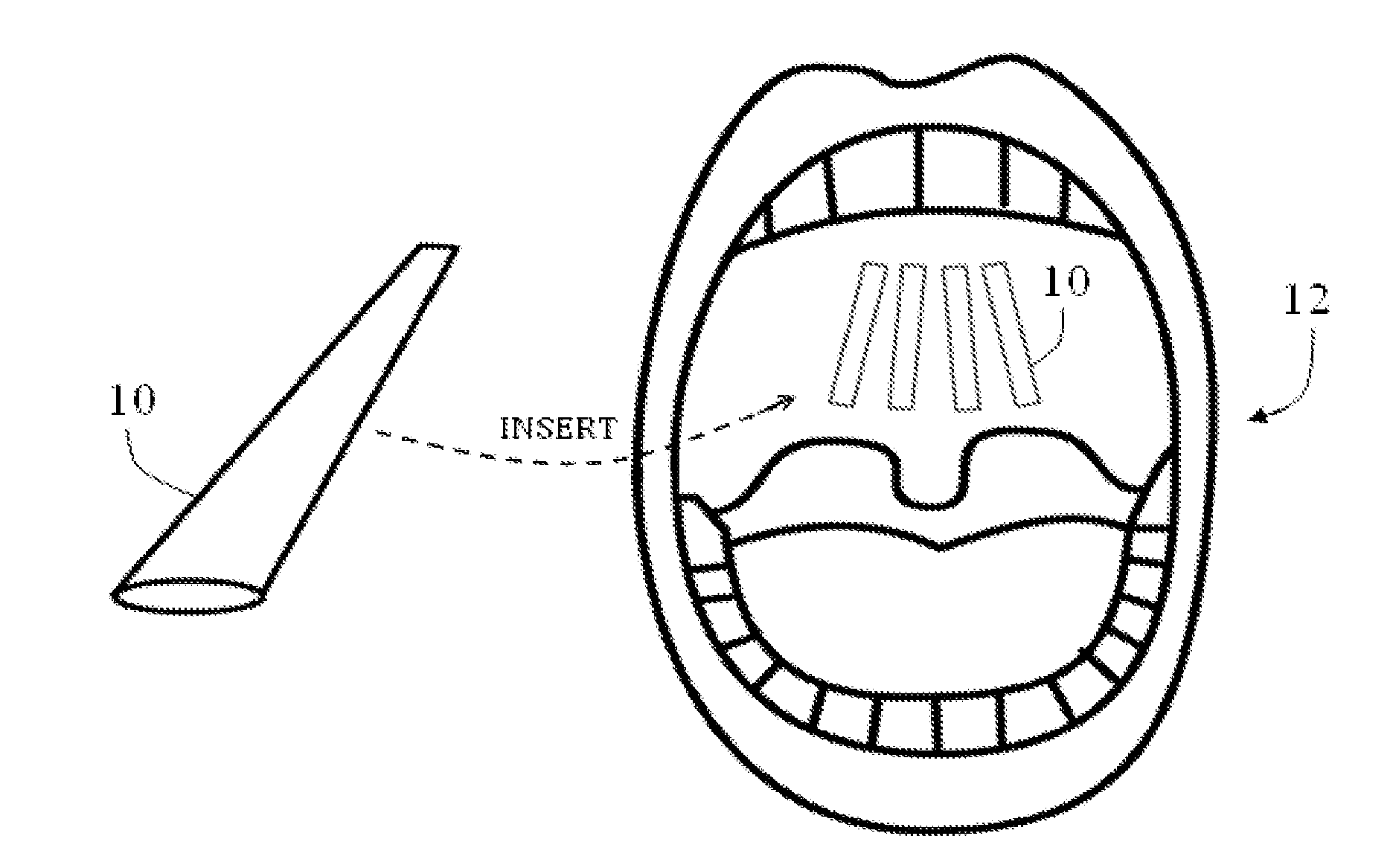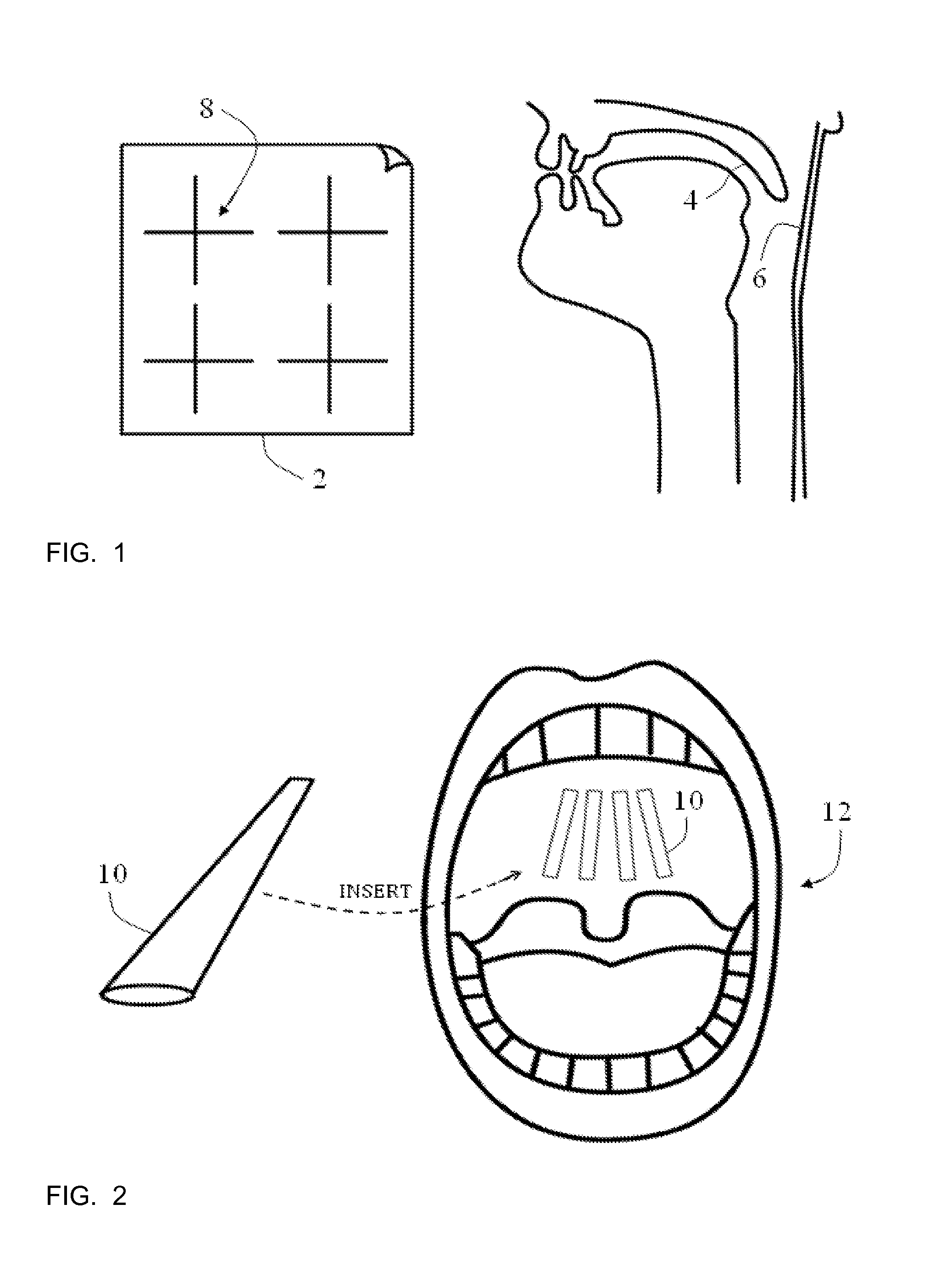Tissue crosslinking for treatment of snoring and obstructive sleep apnea
a technology of obstructive sleep apnea and tissue crosslinking, which is applied in the field of tissue crosslinking for the treatment of snoring and obstructive sleep apnea, can solve the problems of more serious respiratory and cardiovascular complications, excessive snoring, and episodes of hypoxia, so as to reduce the risk of vibration, reduce the risk of snoring, and improve the effect of damping ratio
- Summary
- Abstract
- Description
- Claims
- Application Information
AI Technical Summary
Benefits of technology
Problems solved by technology
Method used
Image
Examples
example 1
[0044]One can treat a patient who suffers from excessive snoring or from OSA where airway blockage caused by the soft palate is a contributing factor by injecting a solution of 40 mM genipin in an alkaline solution such as 100 mM EPPS / 100 mM sodium phosphate buffer at pH 9, or a higher concentration of genipin in a similar buffer further supplemented with dimethyl sulfoxide or a solution of 100 mM methylglyoxal in a similar buffer. This injection can be performed with a large volume at a single location in the palate or in multiple locations using smaller volumes to obtain sufficient coverage of the tissue.
[0045]EXAMPLE 2
[0046]One can treat patients suffering from snoring or from OSA where airway constriction is a contributing factor, by applying a solution of crosslinker as described in Example 1 to either the soft palate or the surface of the pharynx in the form of an aerosolized spray. The spray could be delivered from either a self-contained pressurized container, an actuated pu...
example 4
[0049]One can treat a patient who suffers from excessive snoring or from OSA where airway blockage caused by the soft palate is a contributing factor by implanting non-degradable fibrous strips, for example such as the polystyrene strips used in the Pillar Procedure into the soft palate, coated with a layer of degradable polymer impregnated with crosslinking agent. These strips are coated by either immersing them in a molten polymer containing a dispersed crosslinking agent such as genipin at a concentration of 10 mg per gram of polymer, or by sequential immersions in a solution of containing 50 mM genipin and a saturating concentration of the biodegradable polymer solubilized in a suitable solvent such as ethyl acetate and subsequent evaporation of the solvent.
example 5
[0050]One can treat a patient who suffers from excessive snoring or from OSA where airway blockage caused by the soft palate is a contributing factor by conducting the Pillar Procedure immediately followed by injecting a solution of 40 mM genipin in an alkaline solution such as 100 mM EPPS / 100 mM sodium phosphate buffer at pH 9 into the soft palate.
PUM
| Property | Measurement | Unit |
|---|---|---|
| temperature | aaaaa | aaaaa |
| pH | aaaaa | aaaaa |
| frequencies | aaaaa | aaaaa |
Abstract
Description
Claims
Application Information
 Login to View More
Login to View More - R&D
- Intellectual Property
- Life Sciences
- Materials
- Tech Scout
- Unparalleled Data Quality
- Higher Quality Content
- 60% Fewer Hallucinations
Browse by: Latest US Patents, China's latest patents, Technical Efficacy Thesaurus, Application Domain, Technology Topic, Popular Technical Reports.
© 2025 PatSnap. All rights reserved.Legal|Privacy policy|Modern Slavery Act Transparency Statement|Sitemap|About US| Contact US: help@patsnap.com


